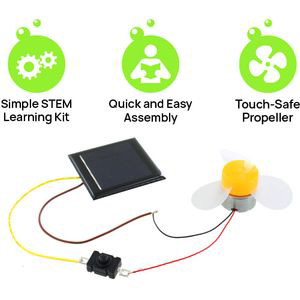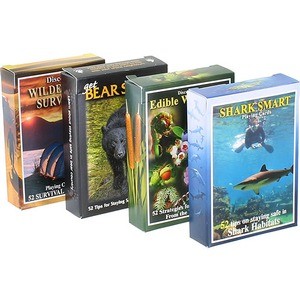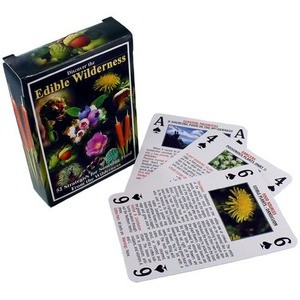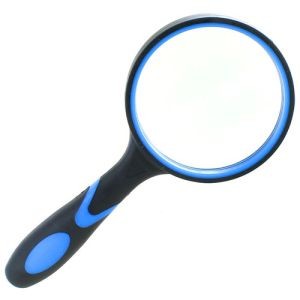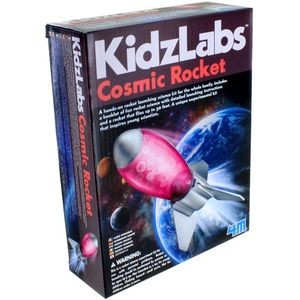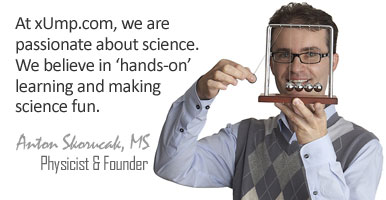-
SHOP BY DEPARTMENT
- Toys & Gifts
- Science Desktop Gadgets and Toys
- Fidgets and Stress Relievers
- Science Meets Art
- Yo-Yos & Gyroscopes
- Remote Control RC Toys
- Glow-in-the-Dark
- Lighting
- Clocks and Watches
- Dinosaur Toys
- Sea Monkeys Kits
- Kaleidoscopes
- Science T-Shirts
- Outdoor Fun
- Balls
- Balloons & Bubbles
- Slime and Putty
- Gags, Pranks & Magic
- Science Mugs
- Pens & Stationery
- Creative Corporate Gifts
- Inflatables
- Edible Science
- Keychains & Bracelets
- Science Party Supplies
- Gift Sets
- ALL Toys & Gifts ITEMS
- Science Kits
- Mini DIY STEM Kits
- Thames & Kosmos Kits
- Building Kits
- Physics Kits
- Chemistry Sets
- Astronomy & Space Kits
- Plants & Growing Kits
- Animal & Insect Kits
- Human Body Kits
- Geology & Dig Kits
- Math Kits & More
- Forensic Science Kits
- 4M Science Kits
- Crystal Growing Kits
- Alternative Energy Kits
- General Science Kits
- Weather Kits
- ALL Science Kits ITEMS
- Robotics & Electronics
- Robots & Kits
- Electronics Sets
- Components
- Connectors, Wire & Switches
- Light Bulbs & Holders
- Soldering Tools & Supplies
- DC Motors
- Test & Measurement
- Tools
- Battery Holders
- Batteries, Adapters & Power Supplies
- Lithium Batteries
- USB Power & Accessories
- Boxes & Enclosures
- Arduino & LilyPad
- ALL Robotics & Electronics ITEMS
- Magnets
- Bar and Block Magnets
- Horseshoe Magnets
- Disk and Ring Magnets
- Mag Marbles and Rocks
- Flexible Magnets
- Iron Filings and Shapes
- Ceramic Magnets
- AlNiCo Magnets
- Neodymium Magnets
- Compasses
- Electro-Magnets
- Letters, Numbers, etc.
- Magnet Kits
- Classroom Magnet Kits
- Fridge Magnets
- Magnet Toys & Puzzles
- Other Magnets
- ALL Magnets ITEMS
- Optics & Lasers
- Microscopes
- Telescopes
- Solar Cells & More
- Lab Supplies
- Fossils & Rocks
- Globes
- Puzzles & Games
- Books & Study Charts
- Go Green Stuff
- Survival & Safety Products
- Toys & Gifts
- NEW & POPULAR
-
BY AGE & PRICE
- ON SALE
7 Hot Science Experiments Perfect for Summer
by xUmp.com Science StaffPlease share this article:

Summer is the perfect time for science experiments!
On the one hand, the weather is excellent, which makes outdoor activities enjoyable. You have the freedom to explore, discover, and roam the great outdoors. Life is in full bloom; the forests and grasses teeming with life. Nothing activates scientific curiosity quite like exploring nature.
On top of that, young learners have a tendency to more or less completely block out academia during the summer. It's not their fault: school is tough on kids, and summer is a time in their lives when they get to simply play and be kids.
Enter, science experiments!
Science is, at its heart, play. These experiments don't feel like science and cleverly disguise learning behind "looking for bugs" or "shooting off rockets," activities that young learners will readily sign up for.
So strap in and get ready for seven awesome experiments that will heat up your summer and get your young scientists more excited than a high-energy atom!
1. Beat the Heat With a Solar-Powered Fan
Depending on where you live, summer can be hot.
Why build a fan to cool you down while flexing the old STEM muscles, a classic case of two birds with one stone. Figuratively speaking, of course. Good science never harms animals.
The 80mm, 3 bladed fan is an excellent, as well as economical, introduction to several important scientific concepts.
First off are photovoltaic (PV) cells and solar energy. Solar energy is one of the primary alternative energy sources working to make society cleaner and more sustainable. It is a crucial industry now and will become even more so in the future.
Stoking a curiosity for solar engineering now could help to inspire your young learner to be one of the scientists who change the future of energy!
The 2V, 130mA polycrystalline solar cell (54x54mm) comes ready with pre-soldered wire leads, so no need for soldering. Simply connect the wires to the pre-attached wire leads on the high-efficiency DC motor (type 300 1V-6V), and you're ready to go.
Another concept in this experiment is that of DC motors: converting electrical energy into mechanical energy through electromagnetic induction. It's fascinating here because you can directly turn sunlight into mechanical energy!
While the process of stripping and connecting the wires is reasonably straightforward, ask your future scientist how the rig is able to turn sunlight into a moving fan.
After allowing them to reflect for a bit, explain that sunlight enters the PV cell, takes in the photons from sunlight, then uses them to generate a flow of electrons. These electrons flow into an electromagnet in the DC motor, which is between another fixed magnet.
When an electric current enters a magnetic field, the particles are pushed by the magnetic force described in Fleming's left-hand rule. This causes the rotor to turn and the blades on the fan to spin.
Help inspire your young scientist to shape the future of clean energy while staving off the summer heat with this 'cool' solar fan experiment!
Learning Outcomes:
Engineering, DC currents, renewable energy, solar energy, electromagnetism, DIY, environmental science
NGSS Standards:
MS–PS1-6, MS-ETS1, MS-ETS2, MS-ETS-3, 4-PS3
Related Items:
Solar & Battery Fan STEM Kit
Fan DIY Micro Car Kit
Fanimals - LED Light-up Hand-held Fan
2. Get Things Moving with a Solar Rover Kit
We're once again capitalizing on the plethora of solar energy available during the summertime.
However, this one cranks things up a notch while also bringing some recycling into the picture. Talk about a sustainability two-for-one!
The solar rover comes with all of the parts necessary for the body and PV connection. All you'll need is a recycled soda can (not included) and a small cross-headed screwdriver for the attachments.
The kit also comes with a fantastic instructor guide that will help craft an engaging and informative lesson around the fun experiment. It includes information on solar energy, PV cell efficiency, and discussion questions to stimulate some critical thinking.
Once again, touching on PV cells and the importance of solar energy, this experiment shows another practical application of solar energy: electric vehicles.
Use this as a lead-in for electric vehicles and companies such as Volkswagon and Tesla, paving the way for this exciting industry!
If you'd like to mix things up and explore other renewable energy options, there is a wind-powered rover as well.
Use both to show young scientists that there isn't any one single solution for the energy crisis, rather many exciting options we can explore and harness from the awesome power of nature.
Learning Outcomes:
Engineering, building, renewable energy, solar energy, wind energy, technology, DIY, environmental science, EVs
NGSS Standards:
MS–PS1-6, MS-ETS1, MS-ETS2, MS-ETS-3, 4-PS3
Related Items:
Solar Rover Kit
Solar DIY Micro Car Kit
Deluxe Solar-Powered Car
3. Harness the Beauty of Solar Energy With a Solar Print Kit and Solar UV Beads
Arts and crafts have been an integral part of the classic summer experience for generations.
Whether at summer camp or with friends at home, summer's freedom and fair weather provide the perfect setting to make beautiful arts and crafts!
Why not partner this classic summer activity with a bit of science?
The solar print kit includes 12 sheets of special solar print paper, which undergoes a chemical change when exposed to sunlight.
Two pre-printed stencil sheets are also included, giving your scientific artists a choice between the nature-themed shapes on the stencils or finding their own objects in nature to trace on the solar print paper.
Want to frame the beautiful artwork or send it out to friends and family? No worries, two frames and three blank notecards with envelopes are also included. Art, especially art made from science, is meant to be shared!
When thinking about classic summer arts and crafts, bead bracelets have to be one of the all-time favorites.
But why settle for dull, ordinary beads when you can harness the power of the sun with solar UV beads!?
Each of the 250 beads in the kit has photochromic chemicals in the plastic, which change color when exposed to electromagnetic radiation from the sun. This makes for not only a fantastic piece of jewelry but also a beautiful reminder to apply sunscreen and protect yourself from UV radiation!

Make a bracelet or necklace as a fashionable reminder to apply sunscreen, melt them to make artful and scientific school projects, or weave like colors in an anklet to create a hidden message which reveals itself in the sun!
Learning Outcomes:
Ultraviolet radiation, photochromic reactions, chemical reactions, DIY, solar energy
NGSS Standards:
MS–PS1-6, MS-ETS1, MS-ETS2, MS-ETS-3, 4-PS3
Related Items:
Solar Print Kit
Solar Print Refill Paper
Sun Art Paper
Solar UV Beads - 250pcs
4. Take Flight With a Giant, 50-foot Solar Balloon
Flying a kite is another classic summer activity, and we've given yet another scientific twist to your favorite summer classics!
Become the talk of the local park by taking this enormous, 50-foot solar balloon for a spin instead of a regular old kite.
Not only is it an excellent conversation piece at the park (as well as a bit of flex), this solar balloon also demonstrates buoyancy, convection, thermodynamics, and solar power. You can also use it to teach Pascal's Principle as well.
Solar balloons gain buoyancy when the air inside is heated by solar radiation. The heated air expands and has a lower density than the surrounding air, thus allowing the balloon to float through the process of convection.
Pascal's Principle explains why, even though different areas of the balloon experience more or less sunlight, the entire balloon floats uniformly.
Pascal explained that a change in pressure applied to any part of the enclosed fluid will be transmitted equally in all directions through the fluid.
A bit of bright direct sunlight on a calm, cool day will have your Solar Balloon soaring in a matter of minutes.
The kit comes with one 50 foot long by 29" diameter Solar Balloon, 400 feet of string, complete instructions, and a science learning guide as well.
5. Become a Scientific Adventurer With Wilderness Survival Cards
Nature is an endless source of scientific inspiration, and summer is the perfect time to explore the great outdoors. While a lot of good science is done in labs, there is also a need for more adventurous exploration!
Whether it be marine biologists studying the ocean depths or biodiversity experts studying biomes deep in the jungles, science relies on bold adventurers to make important discoveries and protect natural environments.
The 4-pack of wilderness survival cards will give you awesome tips and tricks for camping and back-packing in a variety of situations, including emergencies and natural disasters, as well as strategies for sourcing food and how to deal with encounters with dangerous creatures while you're out there in the wilderness, whether on land or in the sea.
The classic Wilderness Survival pack provides advice for surviving forest fires and avalanches, how to avoid snake bites, river safety, hunting for survival, finding potable sources of water, how to tie a variety of useful knots, wilderness first aid, preventing drowning, as well as 42 additional categories/tips/tricks!
The Edible Wilderness cards cover numerous essential topics such as the Universal Edibility Test, how to survive without food, a catalog of poisonous plants, edible insects, specific tips for sourcing food in the desert and coastal climates, edible trees, how to survive without water, plant anatomy, edible mushrooms and fungi, and much more!
The Bear Smart cards feature four different categories and corresponding tips and tricks for dealing with one of nature's most majestic yet dangerous animals. The categories include tips for camping and hiking etiquette, learning to avoid dangerous encounters while continuing to pay due respect to the sanctity of wildlife. A portion of the proceeds goes towards saving the lives of at-risk bears.
The Shark Smart cards contain many facts and an incredible diversity of different card types and classifications. Categories include shark anatomy, shark attack behavior, famous shark attacks, individual sharks such as bull sharks, whale sharks, and much more! Train yourself and your young explorers to avoid shark attacks while you learn about their behavior, reproduction, senses, and more.
These cards will help equip you and your young explorer with the knowledge to boldly adventure and survive any circumstance, all in the name of science!
Learning Outcomes:
Nature conservation, biology, marine biology, zoology, botany, environmental science, scientific exploration
NGSS Standards:
MS-ESS3, MS–PS1-6, MS-ETS1, MS-ETS2, MS-ETS-3, 4-PS3
Related Items:
Wilderness Survival Cards 4-pack Set
2-Pack Edible Wilderness and Survival Cards
Wilderness Survival Playing Cards
Edible Wilderness Playing Cards
Bear Smart Playing Cards
Shark Smart Playing Cards
6. Head Out on a Scientific Expedition with the Original Optic Wonder, Rubberized Handheld Magnifying Glass, and Wooden Boomerang
Now that you've equipped yourself with the priceless knowledge contained in the wilderness survival cards, it's time to use that knowledge and embark on a bold expedition in the name of science!
Any scientific adventurer is only as good as the tools they carry, so we're here to ensure you and your young explorer are well-equipped for this journey.
First up is the incredibly versatile original optic wonder. This ingenious little device includes a compass, binoculars (or monoculars depending on the setting), a magnifying glass, a signal mirror/observation tray, and a stereoscopic viewer, all in one great compact, lightweight tool!
The optic wonder can be used for bird watching, observing insects and plants, signaling friends and family, navigating your way through the woods, or any of a multitude of other uses. Encourage your young explorer to use their imagination and find their own ways to use it.
For more focused magnification and observations, try out the 3x rubberized handheld magnifying glass. Perfect for observing flora and fauna up close and personal, the rubberized frame helps to ensure that it survives all of the bumps and rattles of your expedition.
Finally, every great adventurer needs a bit of protection. Take a note from the explorers of the Australian Outback and bring along this wooden boomerang. Though it may not be required for actual protection, it is fun to throw and can be used to teach about aerodynamics and physics.

A wooden boomerang on the hip also makes an explorer look extra cool, which is always a bonus!
With these tools of the trade, all you and your young explorer need is a forest, and you're ready to embark on a remarkable scientific expedition.
Learning Outcomes:
Nature conservation, biology, botany, environmental science, scientific exploration, magnification, aerodynamics, physics
NGSS Standards:
MS-LS2-4, MS–PS1-6, MS-ETS1, MS-ETS2, MS-ETS-3, 4-PS3
Related Items:
Original Optic Wonder
3X Rubberized HandHeld Magnifying Glass
Wooden Boomerang
7. Blast Off With a Pump Rocket Kit, or Take Things to the Next Level With the Cosmic Rocket Kit
Let's end with a bang!
Propulsion is one of the most exciting concepts in all of science. There is something visceral and awesome about watching a rocket take off or a fast car streak across the desert, especially when we are the cause of the spectacular event.
Leverage this exciting concept to help 'pump up' and inspire your future scientists!
For younger learners, there is the Sci-bits: Pump Rockets Kit. This kit includes a compressible bellow, a launch pipe with a base holder, and three soft foam rockets, which can be launched up to 20 feet in the air.
This is an excellent introduction to Newtonian rocket science, with velocity and trajectory up front and center in this absolute blast of an experiment. Try making a target and having your future rocket scientist adjust the angle and force at takeoff to hit the target!
Older learners might want to take things up a notch so, for them, we suggest the Cosmic Rocket Kit.
Touching on similar concepts as the pump rocket but utilizing the power of chemical reactions, this rocket uses vinegar and baking soda to launch the cosmic rocket up to 50 feet in the air!
Chemical reactions are another exciting scientific phenomenon, especially when it's an explosive reaction launching a rocket 50 feet into the air.
These two seemingly innocuous kitchen items react because one is a base while the other is an acid. In this case, baking soda is sodium bicarbonate (a base), and vinegar is diluted acetic acid. When they react to release the OH and H to become water, they also release carbon dioxide, which causes the solution to bubble and expand rapidly, much like shaking a can of soda.
The rocket, much like an unopened can of soda, contains that pressure, allowing it to build up until it is enough to send the rocket flying.
Whether getting pumped up with the pump rockets or really blasting off with the Cosmic Rocket Kit, these explosive experiments are sure to excite and inspire the next generation of rocket scientists!
Learning Outcomes:
Rocket science, Newtonian physics, pressure, aerodynamics, chemical reactions, physics, chemistry
NGSS Standards:
4.Energy, MS–PS1-6, MS-ETS1, MS-ETS2, MS-ETS-3, 4-PS3
Related Items:
Sci-bits: Pump Rockets Kit
Cosmic Rocket 4M Kit
Seismic Accelerator



